NHL's speedy possession game forging a revolution on the blue line

When Stars defenseman John Klingberg was learning to play hockey as a boy in Sweden, one thing stood out. He was always the smallest kid on the ice. Rather than give up on his dream of playing professionally before it even started to take root, Klingberg had to adapt.
“I had to be smart,” he told SI.com by phone from his native country.
That meant learning to not get crushed in the corners by hard-charging forwards, to get out of a scrum with the puck and to play within his team’s structure and not for himself.
Developing a shrewd hockey sense has made Klingberg one of the game’s rising stars. The still small 22-year-old does not look like the prototypical defenseman. He doesn’t lay out crushing hits like classic back line bruisers such as Scott Stevens, doesn’t dole out nasty punishment with elbows and sticks the way Chris Pronger used to and doesn’t blast pucks through the net like Shea Weber does.
Yet Klingberg has plenty going for him, especially after scoring 40 points in 65 games as a rookie last season. At 180 pounds, he is not an anomaly in the sport. Erik Karlsson, the league’s top-scoring defenseman of 2014–15 and a two-time Norris Trophy winner, weighs 180. Duncan Keith, the reigning Conn Smythe Trophy-winner and a three-time Stanley Cup champion, tips the scales at 192. Of the top 10 scoring defensemen in the NHL last season, seven weighed less than 205 pounds. As the league moves to a wide-open, high-scoring game, coaches are putting a greater emphasis on smaller, mobile defensemen who can skate the puck out of their own end and make plays in the offensive zone.
For Dallas, investing seven years and nearly $30 million in a defenseman who has only 65 games under his belt is not guesswork. It’s the new NHL.
SI Vault: Boston's savior Bobby Orr commands respect, high price at 18
when he scored 124 points in 1970–71 to win the scoring title.
“He’s the one that changed the game,” says Danny Flynn, the head coach of the QMJHL’s Saint John Sea Dogs, and a former assistant with the Sabres. “He made the defenseman a part of the attack, he made the defenseman part of the rush. [He] really was a pioneer.”
Orr paved the way for high-scorers like Denis Potvin, Paul Coffey, Ray Bourque and Phil Housley, among others. But by and large, defensemen of that era were still asked to play a defensive style first.
A typical forecheck played out like this: An opposing winger would dump the puck in. A defenseman would go back to retrieve it while a winger attempted to hold up the forechecker and his defense partner screened and watched out for him. After the lockout of 2004–05, the NHL instituted rule changes designed to improve offense. In came the two-line pass; out went clutching and grabbing, and the old style of defending dump-ins. The new rules opened up the ice, leaving more room for skilled players to show off their talents. At the same time, the changes made it harder for slower defensemen to keep up.
“The rule changes have been good to speed up the game,” says Rick Bowness, an assistant coach for the Lightning. “It’s a much faster game. It’s a beautiful game to watch.”
Suddenly, the 6' 7", 250-pound bruiser whose sole job was to pound opposing forwards into submission in front of the net was not as valuable as a guy who could skate fast and make plays. Defensemen have to get the puck in the corner and get it out—quick.
Calder Trophy winner Aaron Ekblad showed rare excellence at age 19
—5' 9", 175— just scored 29 goals during the regular season and had 23 points in the playoffs. As blazing skaters, both Kane and Johnson have taken advantage of the increased room on the ice to make dazzling plays.
“Go look at Johnny Gaudreau,” an Eastern Conference scout told SI.com, referring to the Flames’ 5' 9", 150-pound water-bug winger, who had 64 points as a rookie and finished third in the Calder Trophy voting. “We’re in the business of entertaining.”
But getting the puck to these skilled entertainers begins in the defensive zone. John-Michael Liles, a 5' 10", 185-pound defenseman for the Hurricanes, has gone into the corner to retrieve pucks countless times during his 11-year career. He says he’s aware of the often bigger forwards bearing down to crush him. But Liles does have one advantage.
“As a smaller defenseman, I’m just trying to use my quickness and speed to get some sort of body position,” he says. “There are times you get hit. [But] if you are undersized and can skate and make a good first pass, I think you can still play the game.”
Once someone like Liles is able to use his speed to outskate a forward to get the puck, the next critical thing is to get the biscuit up the ice. The NHL has become a puck possession game; the longer a team has the puck, the more offensive chances it will create and the more successful it will likely be. Puck possession starts with the defensemen.
“Today’s game is all about getting the puck out of your zone as quick as you can,” says Jim Nill, the general manager of the Stars. “The quicker you can make a pass out of your zone, the less time you’re going to spend defending.”
The epitome of this model is Chicago, which is coming off its third Cup championship in the last five years. Led by Keith, the Blackhawks excel at getting the puck and moving it out quickly. In this year’s Cup final against the Lightning, coach Joel Quenneville relied on his team’s ability to move the puck and open up space for its forwards.
“We found over the course of the series, you want to get it out as crisply as possible,” Quenneville says by phone. “We found that when we just got it out [of the zone], it really loosened up some of the pressure we got [from Tampa Bay].”
Victor Hedman quietly grows into cornerstone of Lightning's defense
The NHL game is different than it used to be in the 1990s. It’s faster, leaner. And the post-lockout changes have trickled down to the junior levels, grooming a long line of talented, fleet-footed defensemen. All eight backliners who were selected in the first round of this year’s NHL draft weighed 206 pounds or less. Teams are even looking at guys whose size would have previously made them persona non grata in the old clutch and grab league, in which goons patrolled the ice and a premium was placed on size. In the third round, the Red Wings drafted Vili Saarijarvi, a 5' 10", 163-pound Finnish defenseman who played last season in the USHL. Saarijarvi, through a translator, says that the Wings told him they like his ability to drive possession.
“If you look at a Keith or a Karlsson, 20 years ago, [teams] would’ve looked at them, [and said], ‘They’re not real big, do we have a job for them?’ ” says St. John’s Flynn. “And now those guys are premier guys.”
Darrell Young, the GM of the Sea Dogs, saw what happened when elite skaters took the ice even if they weren’t the biggest guys around. Two of his defensemen, Jakub Zboril and Thomas Chabot, were both drafted in the first round this year—Zboril 13th by Boston, Chabot 18th by Ottawa. Zboril is 6-foot, 184 pounds. Chabot is 6' 1", 180. Both of their skill sets are tailor-made for the new NHL.
“You have to get guys who can handle the puck,” Young says. “In the old days, you had guys who could play strong physical defense, protect their own end, but in the other two zones they weren’t very effective.”
Both Zboril and Chabot are three-zone players. Zboril, according to Young, has a lot of skill and “plays like he wants to hurt people.” Chabot, per Young, was the most elite skater among the defenseman in the CHL prospects game last January, a contest in which No. 7 draft pick Ivan Provorov also played.
“You can’t play in the NHL unless you can skate,” says Dan Marr, the director of NHL Central Scouting. “If you can’t get the puck out of your own end, you’re in trouble. You just can’t afford to have a player who can’t move out there.”
Even for smaller defenseman, the fear of not being able to keep up remains. Jared Spurgeon is a 5' 9", 185-pound backliner with the Wild. His off-seasons, he says, are always focused on improving his skating.
“Skating is always a huge thing in the summer,” Spurgeon told SI.com. “Our division is very skilled. That speed is huge for me, especially being a smaller guy.”
The league is never going to fully transition to an all-small lineup. There is still a need for bigger defenseman. Take the dichotomy between the Bruins’ Torey Krug and Zdeno Chara. Krug stands 5' 9" and tips the scales at 181 pounds. Chara weighs in at 6' 9", 255. Both sizes have their advantages and disadvantages.
“He can get away with more things than I can,” Krug says of Chara. “If his gap isn’t perfect, he overcomes that with the ability to use his stick, which is taller than me.”
Ranking NHL's 10 most promising defensemen under the age of 23
Those guys, they’re changing their speeds as well. You have to adapt to it. Using your skating ability is crucial.”
When a skilled defenseman can combine elite speed with offensive prowess, something special is afoot, regardless of his size. That’s what happening with Klingberg who, while scoring his first NHL goal, deked Coyotes forward Mikkel Boedker with a toe drag, then wristed a shot top-shelf past goalie Mike Smith.
“We think he’s going to be a top-two defenseman in the NHL,” says Nill. “To do what he did, over 60 games, is pretty impressive.”
Klingberg’s play draws natural comparisons to Karlsson. They are both from Sweden, both of similar stature and both play a similar game. Klingberg may be on the path towards joining Karlsson in the elite stratosphere of defensemen, but he insists that he’s setting his sights on just being himself.
“You don’t want to try to be like him,” Klingberg said. “But he’s a success, so I can try to do some of that stuff. But I try to play my own game.”
And that game, of course, is the NHL’s latest version.
Top 25 NHL Defensemen of All Time
Top 25 NHL Defensemen of All Time
25. Shea Weber
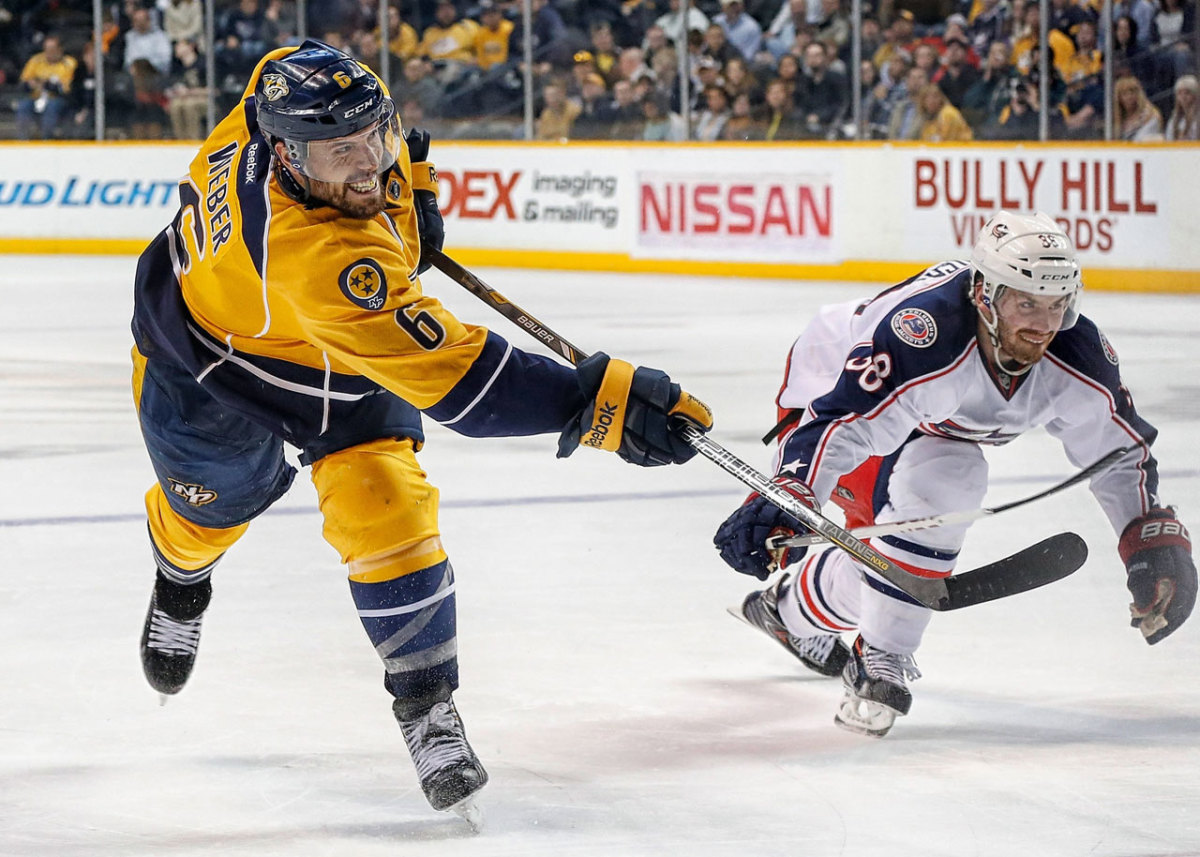
Weber is a complete defenseman. At 6’-4”, 235 pounds, he packs a mean streak and a cannonball shot. Though he’s still only 29, he already has six seasons of at least 16 goals on his resume and an Olympic gold medal he won while playing for Canada at the 2010 Games. He should win his first Norris Trophy before long, but his legacy will ride on whether he can win the Stanley Cup.
24. Borje Salming
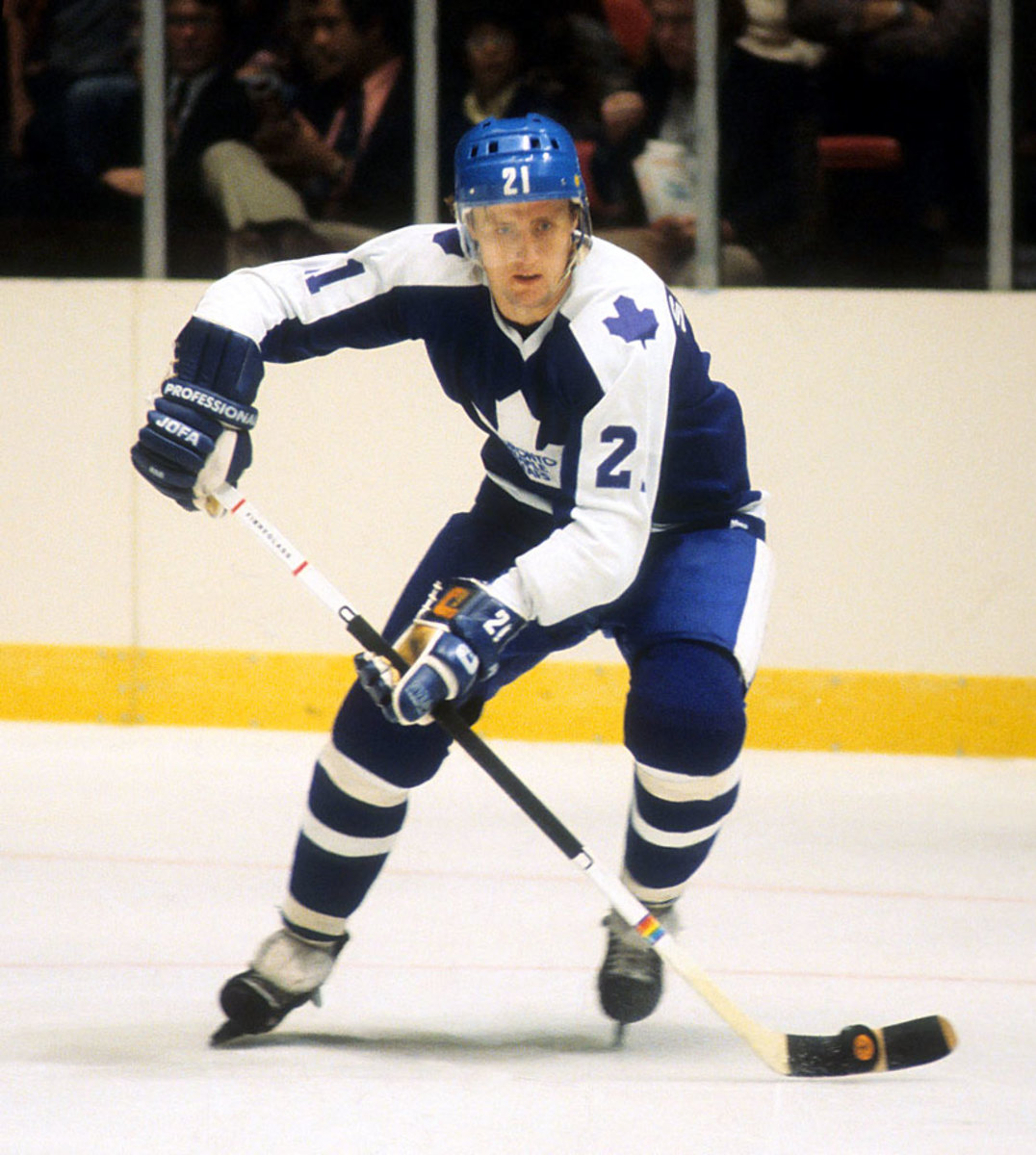
The longtime Maple Leaf came over to the NHL during the Broad Street Bully days of the mid-70s when the league’s ruffians ate Swedish players for lunch. Salming took some brutal hackings and beatings, but he also won respect for playing through them and becoming a fine support player for the likes of Darryl Sittler and Lanny McDonald in Toronto. Salming earned five Second-Team All-Star selections and was a First-Team pick in 1977. He finished his career with 787 points and +175 rating in 1,148 games.
23. Rob Blake
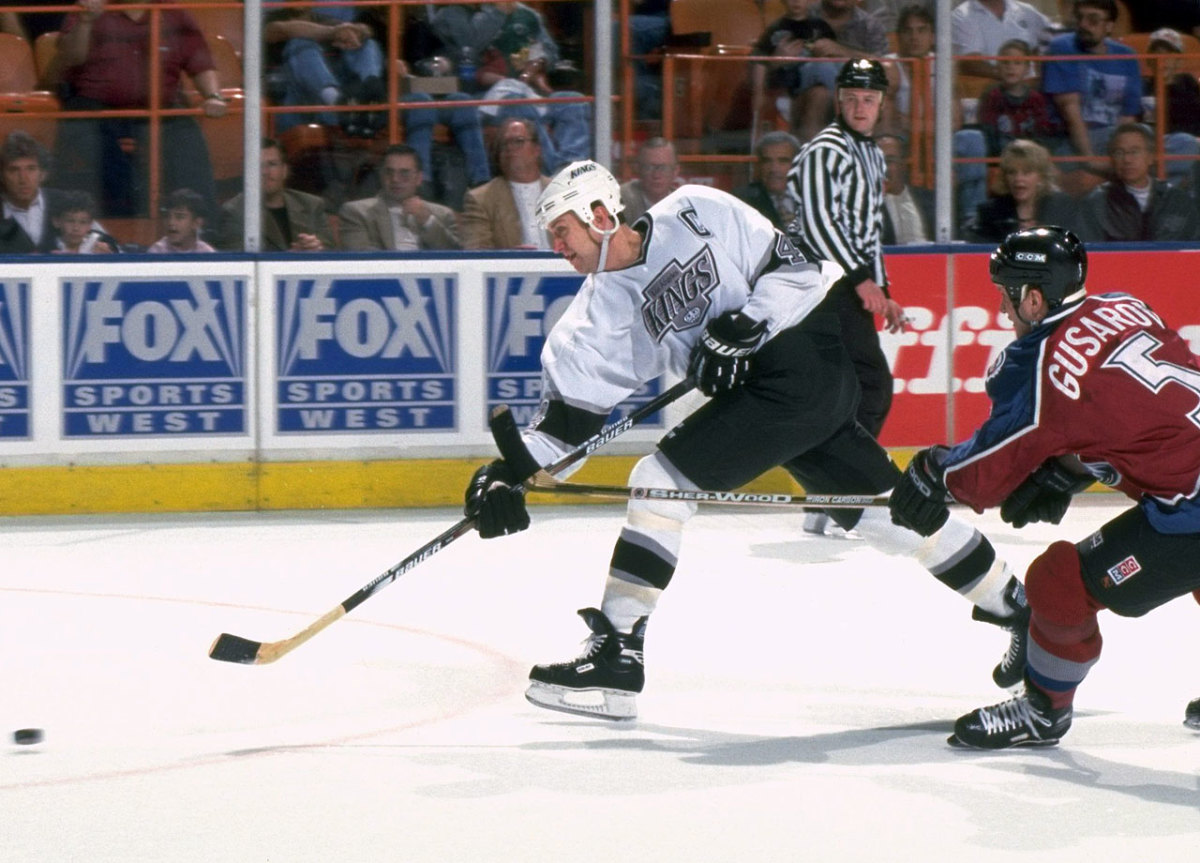
The classic two-way defenseman was a stiff checker and steady puck mover who scored double figures in goals 13 times during a career that spanned 1,270 games and produced a Stanley Cup in Colorado and gold medals at the World Championships and Olympic Games while representing Canada. Though he never posted a 70-point season, Blake still amassed 777 points, a testament to his consistent production throughout his career. He also won the Norris Trophy in 1998 as an L.A. King.
22. Scott Niedermayer
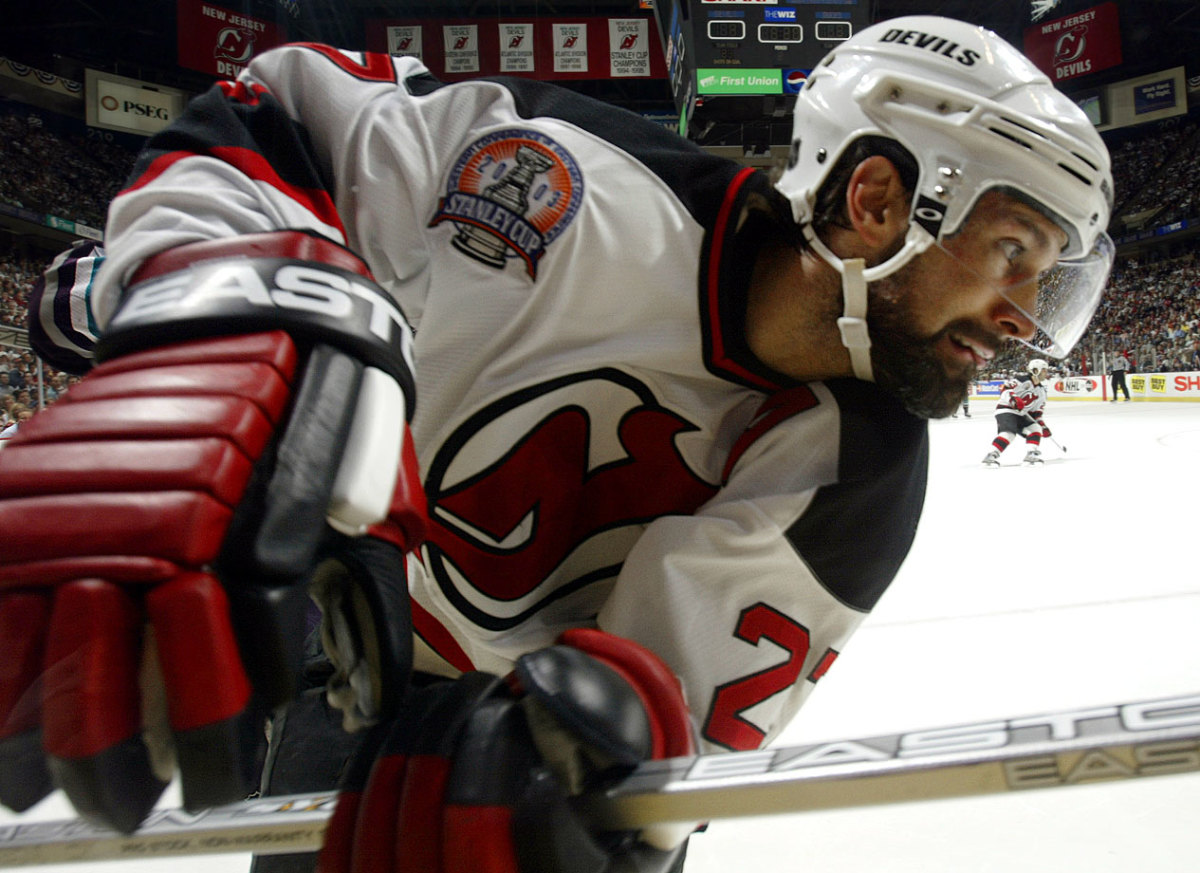
The fleet Niedermayer was a remarkably effective offensive blueliner (35 or more points in a season nine times) during an age of clutch-and-grab on a defense-minded team. Despite the Devils’ restrictive system, he was able to shine, winning the Norris Trophy in 2004 and three Stanley Cups (1995, 2000, ’03) before adding another championship with his brother, Rob, with Anaheim while earning the Conn Smythe Trophy in 2007. A winner at every level of hockey at which he played, Niedermayer's mantel also holds gold medals from the Olympics (2002, '10), World Championship ('04), World Cup ('04), and World Junior Championship ('91).
21. Zdeno Chara
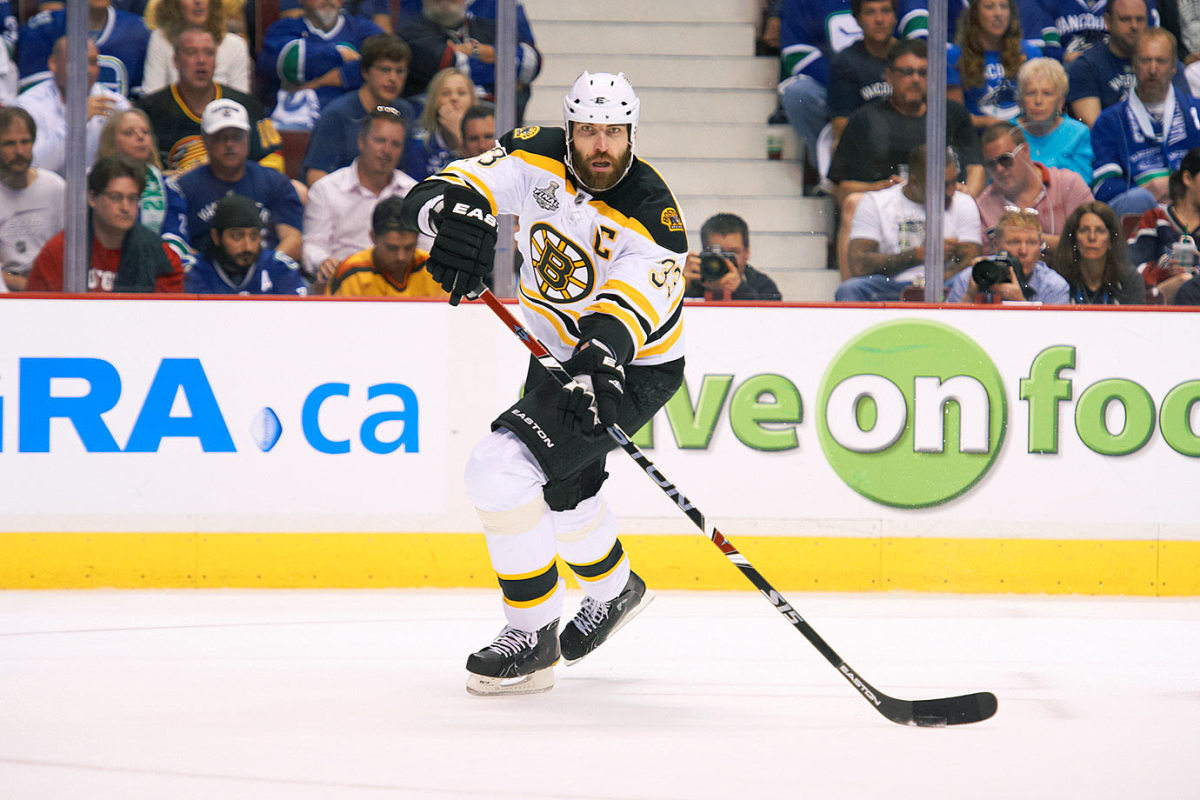
At 6’9”, Big Z is the tallest player ever to play in NHL and yet has remarkable dexterity and puck control for someone who towers over the league. Even at 38, the 17-year NHL veteran is still a scary foe to play against. Though he will always be remembered for a scary turnbuckle check against Montreal's Max Pacioretty, Chara is actually fairly controlled for a physical force he has been throughout his career, even with more than 1,600 penalty minutes in over 1,100 games played. He helped end Boston’s Stanley Cup draught with his brilliant play in the 2011 postseason.
20. Mark Howe
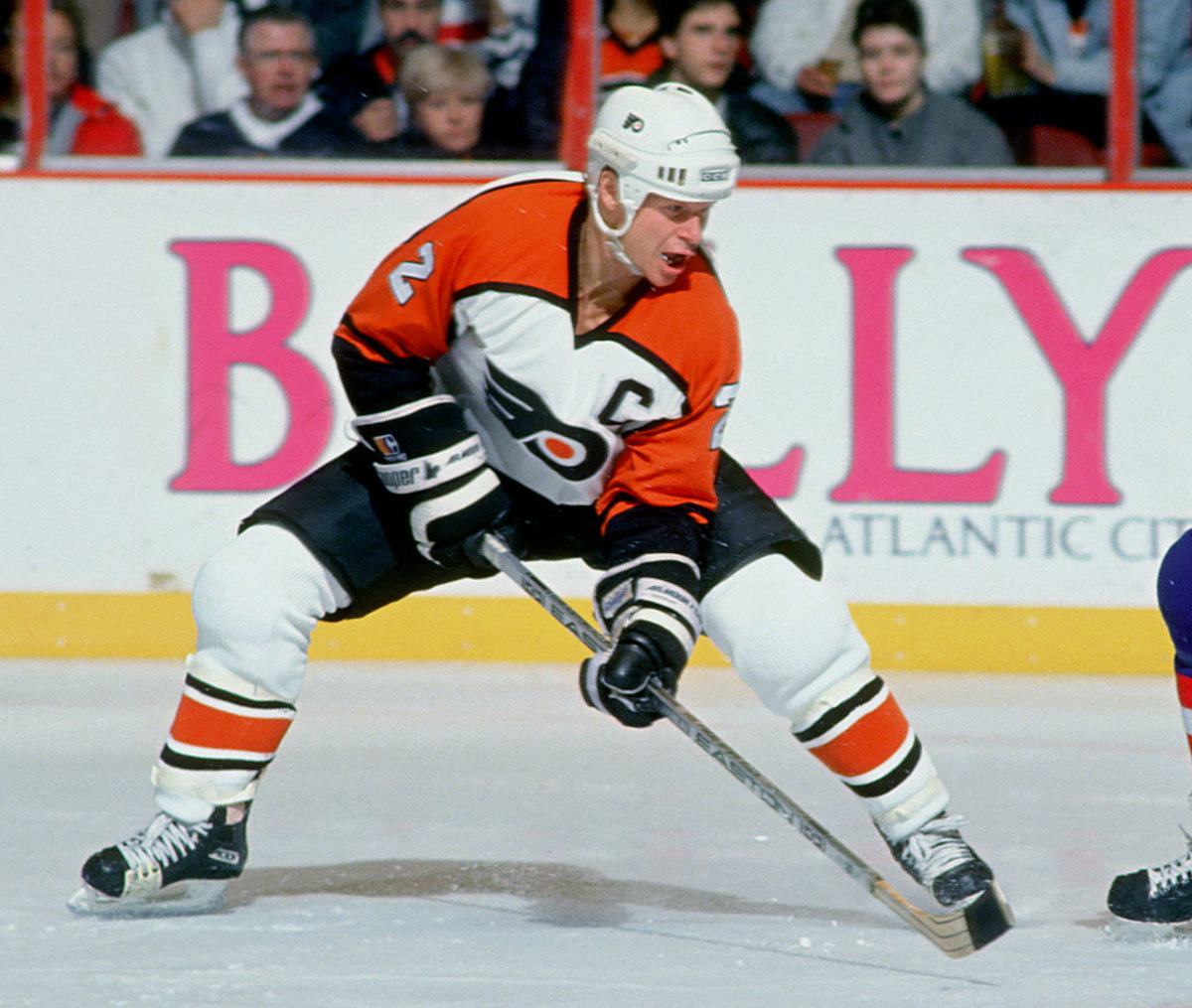
Gordie’s son didn’t have his dad’s mean streak but he earned enshrinement in the Hall of Fame as a defensive stalwart. In the 1980s, Howe played an astounding 30 straight games without being on the ice for an even-strength goal-against. The three-time Norris Trophy finalist was also a fine candidate for the Lady Byng, an unusual distinction for a defenseman, or the Masterton Trophy, having survived a gruesome injury in which the plate that used to keep the goal net firmly on the ice got stuck five inches into his hip.
19. Rod Langway
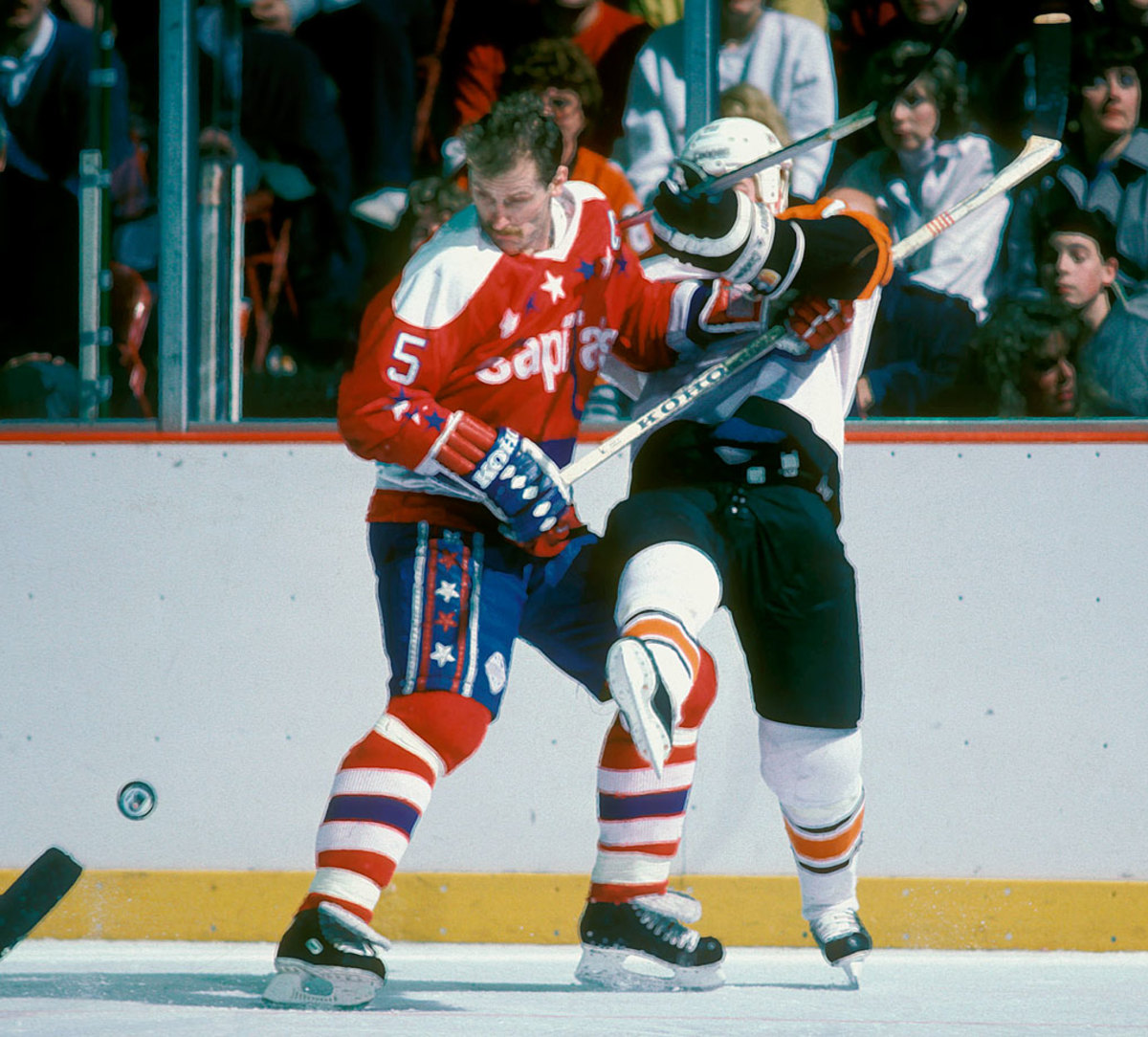
Langway made the Hall of Fame purely on his defensive skills. The two-time Norris winner was never especially fast, but he always seemed to cover a lot of ice because of his tenacious play along the boards and relentless pursuit of pucks and opposing forwards. He played the game with an attitude and was effective at keeping his crease clear. Langway won the Cup with Montreal in 1979 and later became a force with Washington for 11 seasons.
18. Larry Murphy
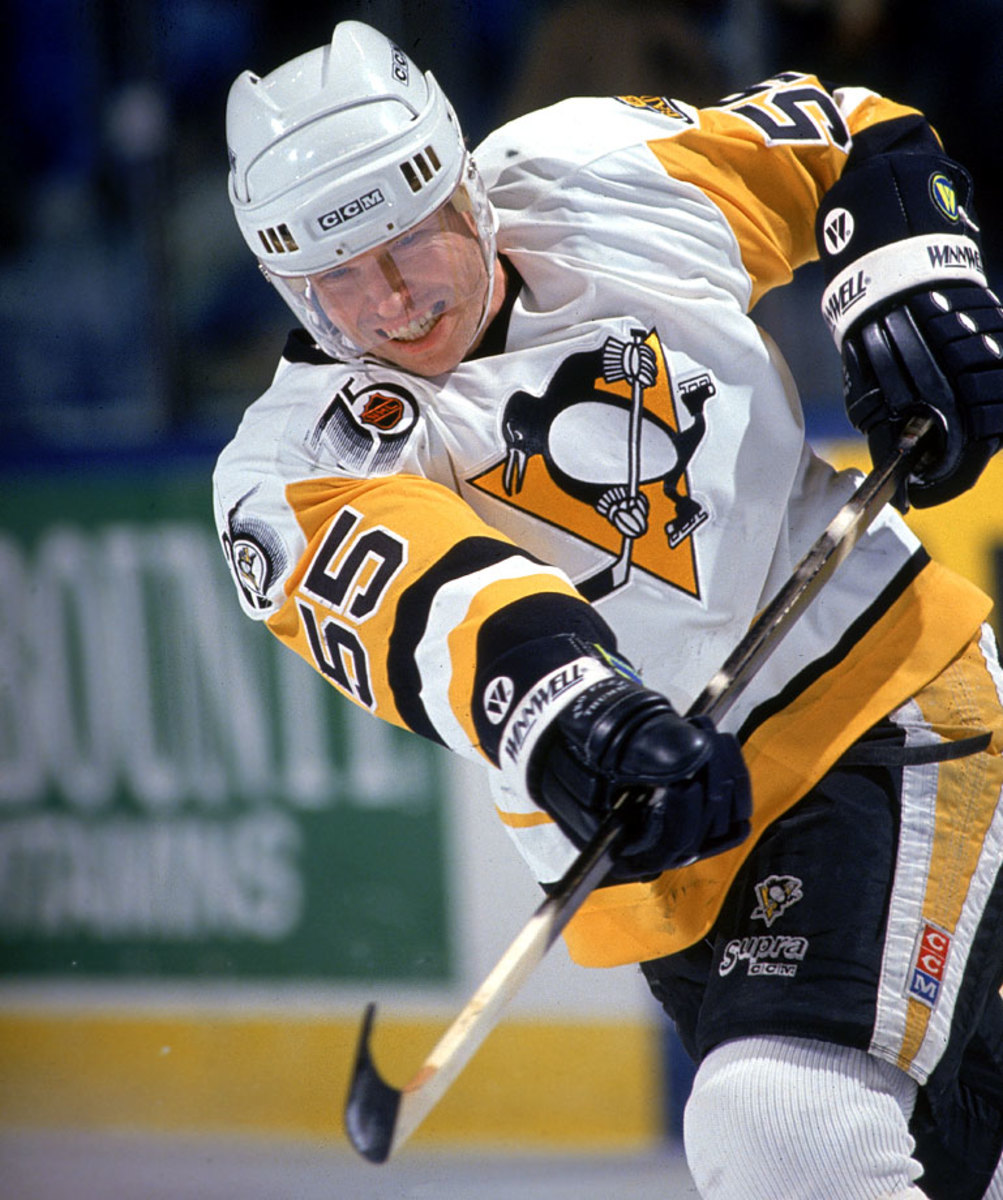
The Rodney Dangerfield of backliners was rarely fully appreciated for how durable (1,615 games), consistent (1,216 points) and successful (215 playoff games) he was. Murphy became an offensive star in Washington and won a pair of Cups with both Pittsburgh and Detroit. As a Red Wing, he was a fine complement to Nick Lidstrom as a team player.
17. Brad Park
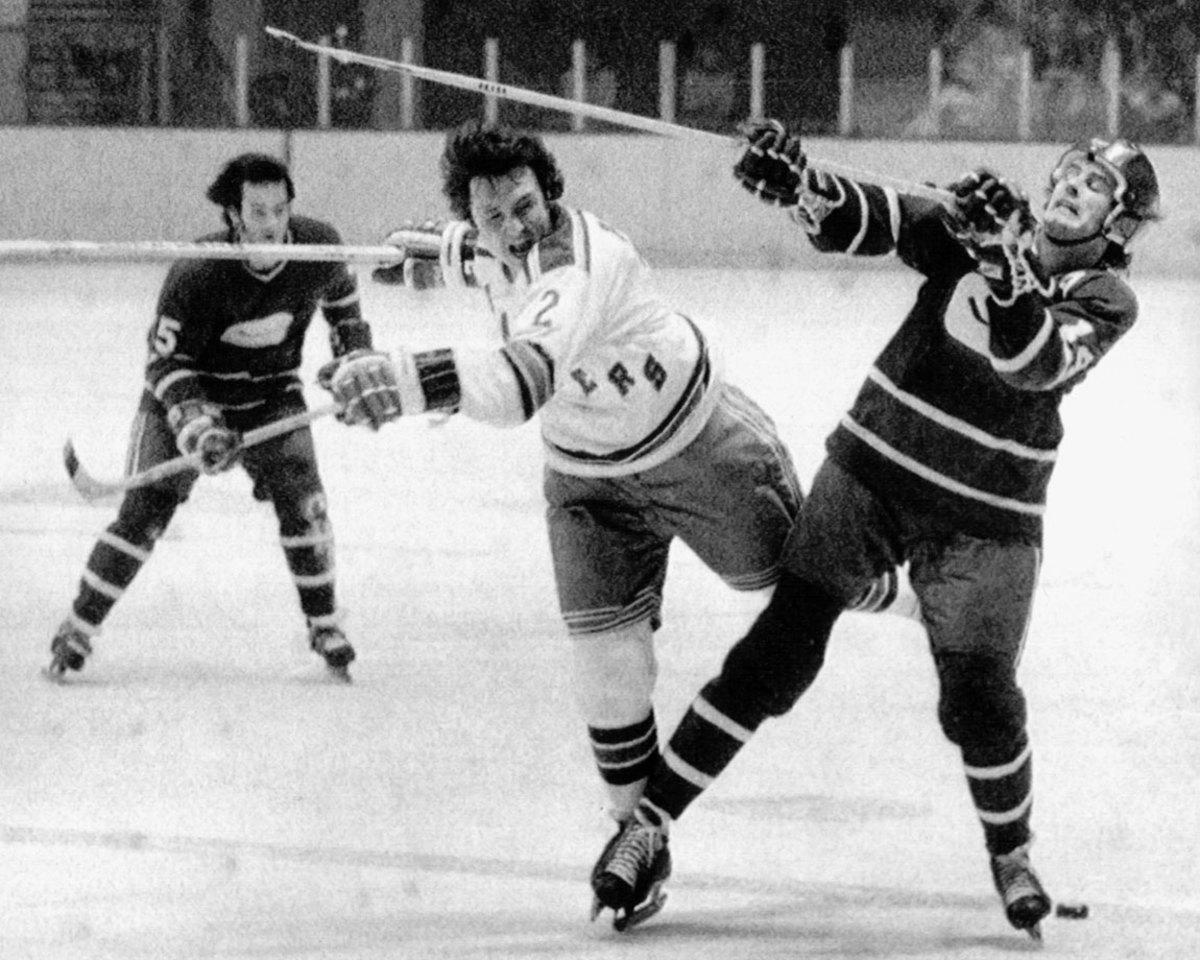
The greatest defenseman of his generation who wasn’t named Orr, the physical, scrappy Park was an NHL First Team All-Star five times, a Second Teamer twice, and runner-up to Orr for the Norris on six occasions. Though he played on some outstanding teams with the Rangers and Bruins, Park never won the Stanley Cup. He did appear in 161 career playoff games and his teams never missed the postseason during his 18-year NHL career. He also topped the 20-goal mark three times and scored at least 10 goals 12 times.
16. Al MacInnis
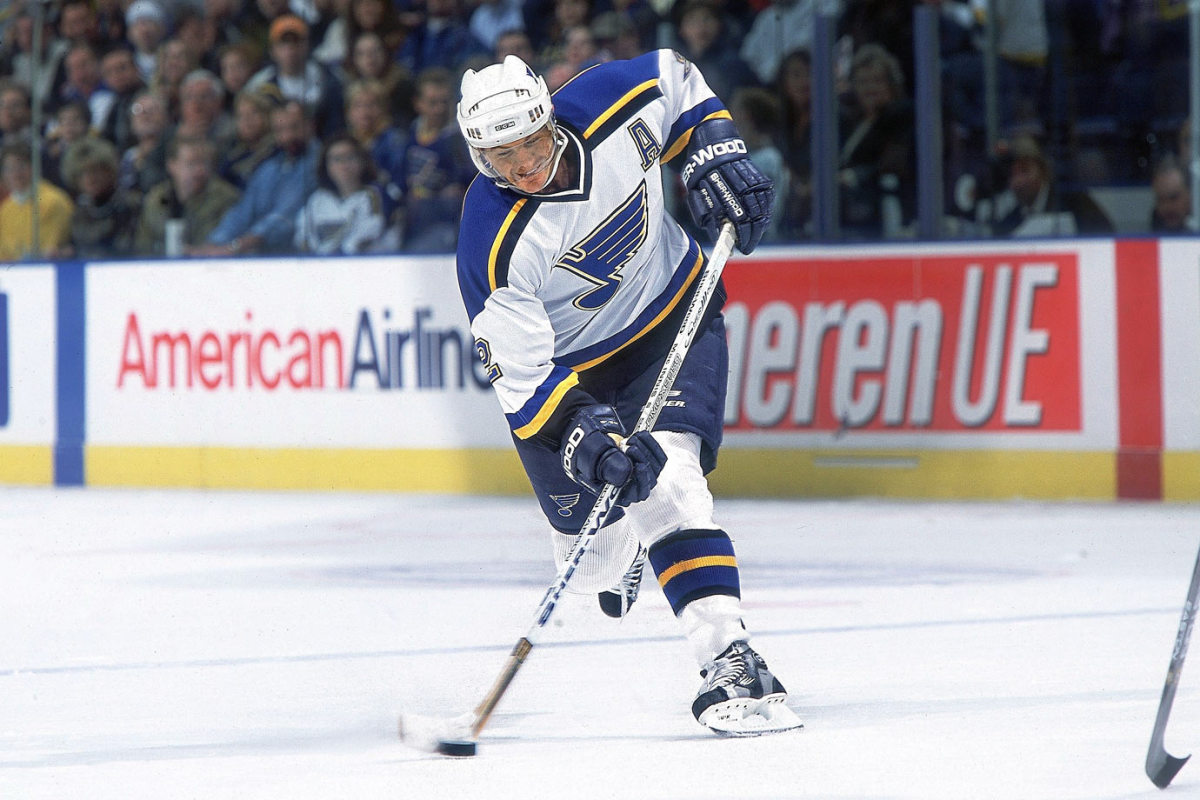
Skilled at joining rushes and keeping pucks out of traffic areas in front of his net, MacInnis may have had the most devastating shot in hockey history. He was also able to keep his blasts low and control them so his teammates could tip them past goalies. His shot grew into legend after a game in 1984 when he fired a puck that split goalie Mike Liut’s mask into two pieces before bouncing into the net. A Cup winner in 1989 with Calgary, he finished his career with 1,274 career points.
15. Marcel Pronovost
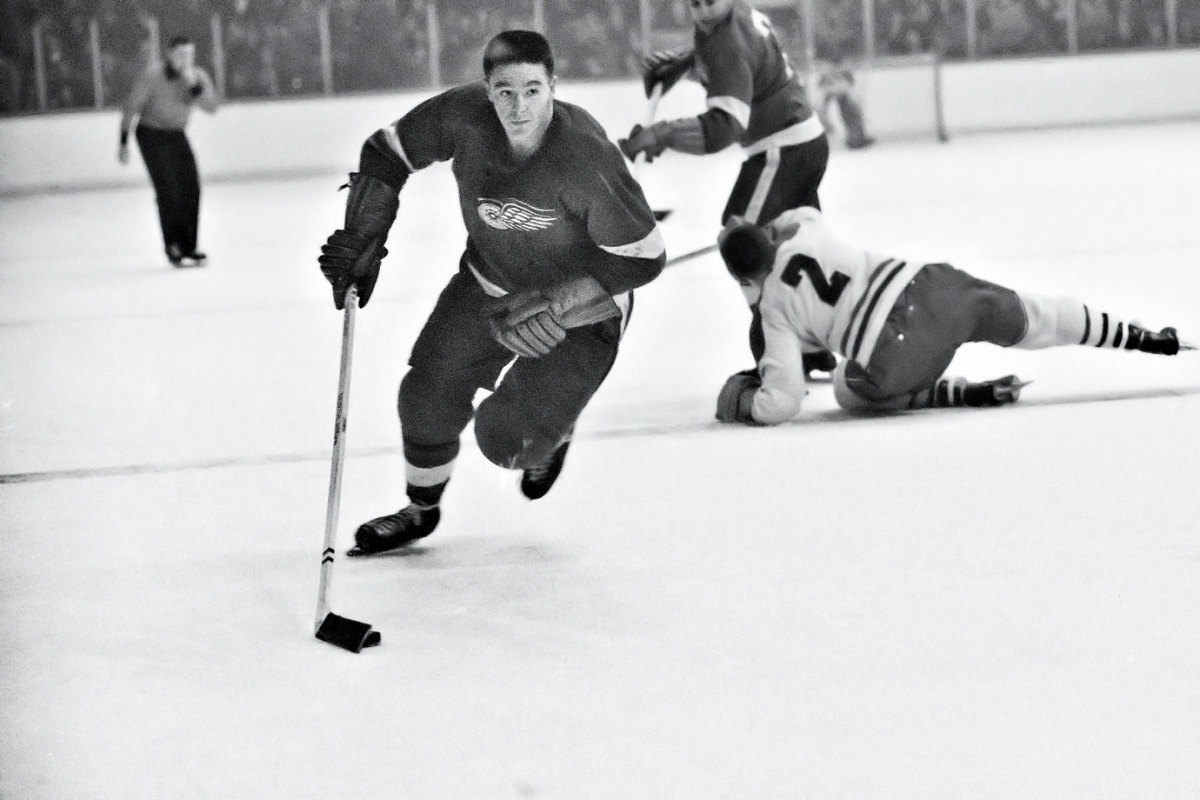
Pronovost played in 11 All-Star Games and won five Cups, including four with Detroit and one with Toronto. A former forward, he played both positions early in his NHL career. During Toronto’s Cup run in 1967, the steady Pronovost was on the ice for only one even-strength goal-against during the entire postseason.
14. Paul Coffey
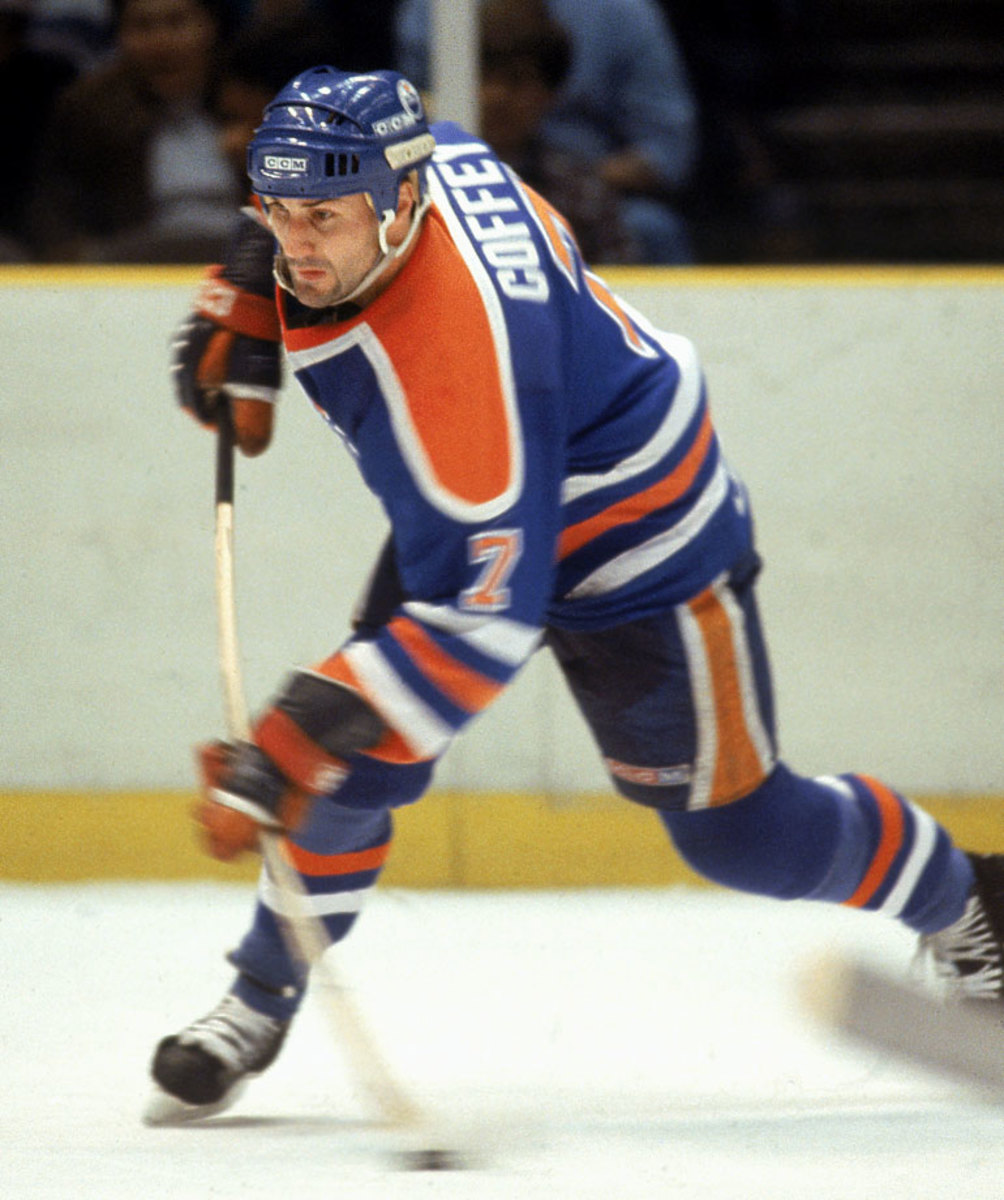
No defenseman since Bobby Orr has been as gifted. On the run-and-gun Oilers, the smooth-skating Coffey was deadly on the power play or the rush as a fourth man, a stealth trailer who feasted on chances produced by the likes of Wayne Gretzky, Mark Messier, Jari Kurri and Glenn Anderson. After winning three Cups with Edmonton, where he scored 48 goals in 1985-86, he added another with the Penguins in 1991, making him one of the fortunate few to ride shotgun with both Gretzky and Mario Lemieux in their heydays.
13. Scott Stevens
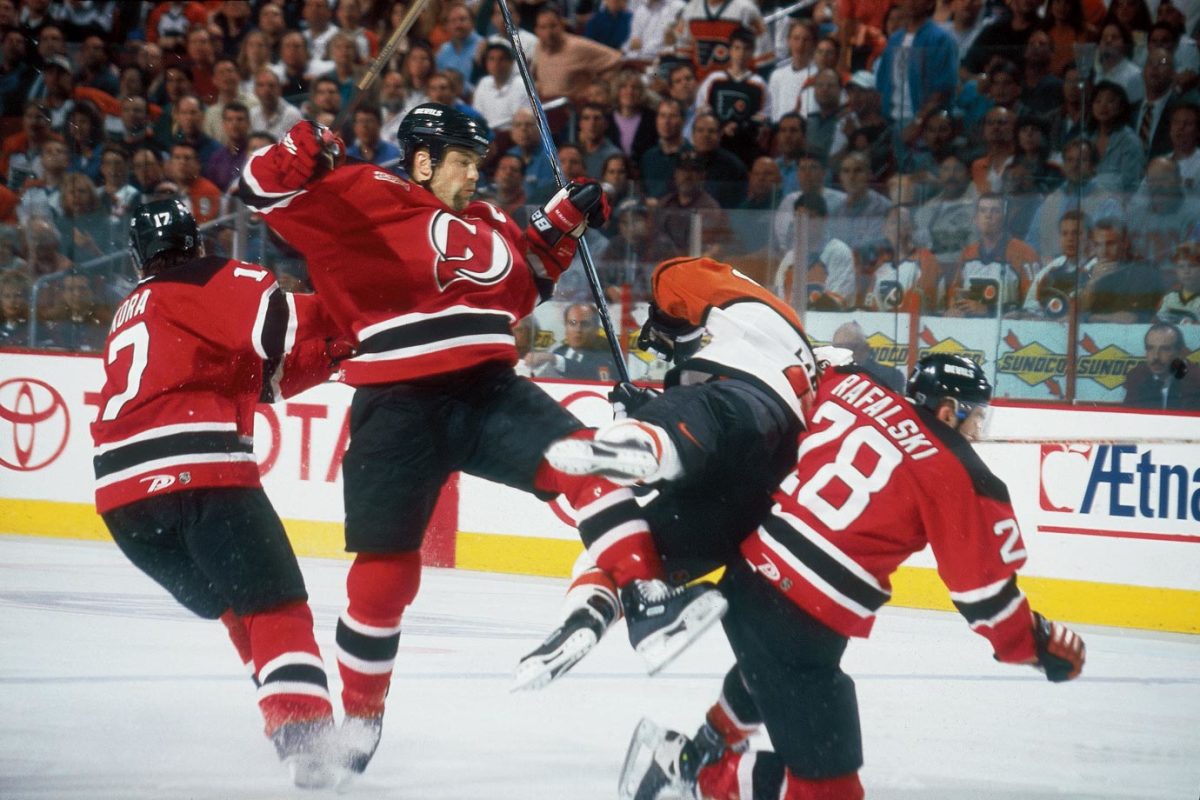
Arguably the most devastating checker of all time, Stevens knocked players senseless with hits that would get him suspended today. His most notorious was the one on the much larger Eric Lindros of the Flyers in the 2000 playoffs. A plus player in each of his 22 seasons, Stevens was more than adequate offensively (908 points) and he captained the Devils to the Cup in 1995, 2000 and ‘03.
12. Tim Horton
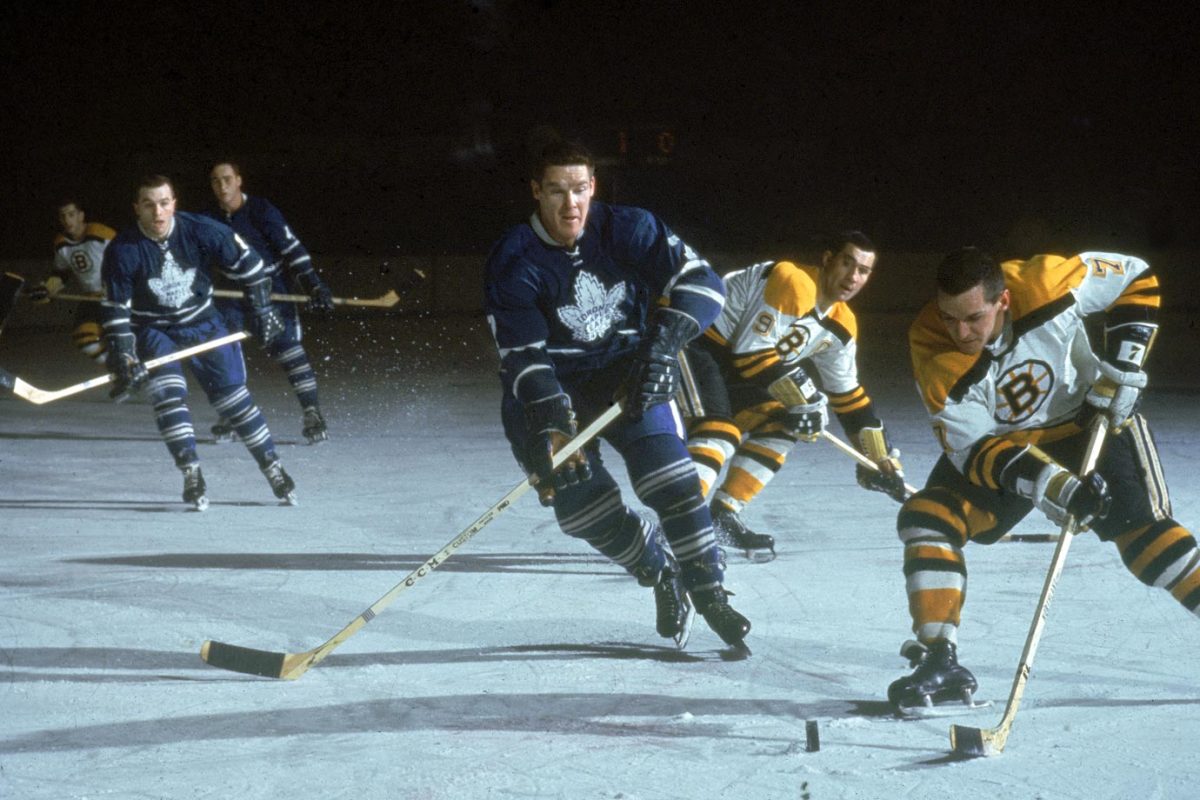
Now known for the donut chain that bears his name, Horton was one of the game’s steadiest, strongest defensemen. He held the NHL’s ironman mark for blueliners with 486 consecutive games played until Karlis Skrastins broke it in 2007, despite suffering a broken leg and jaw after being checked by Ranger Bill Gadsby in 1955. Horton played in 1,446 games, capturing four Stanley Cups with Toronto before playing with the Rangers, Penguins and Sabres.
11. Chris Pronger
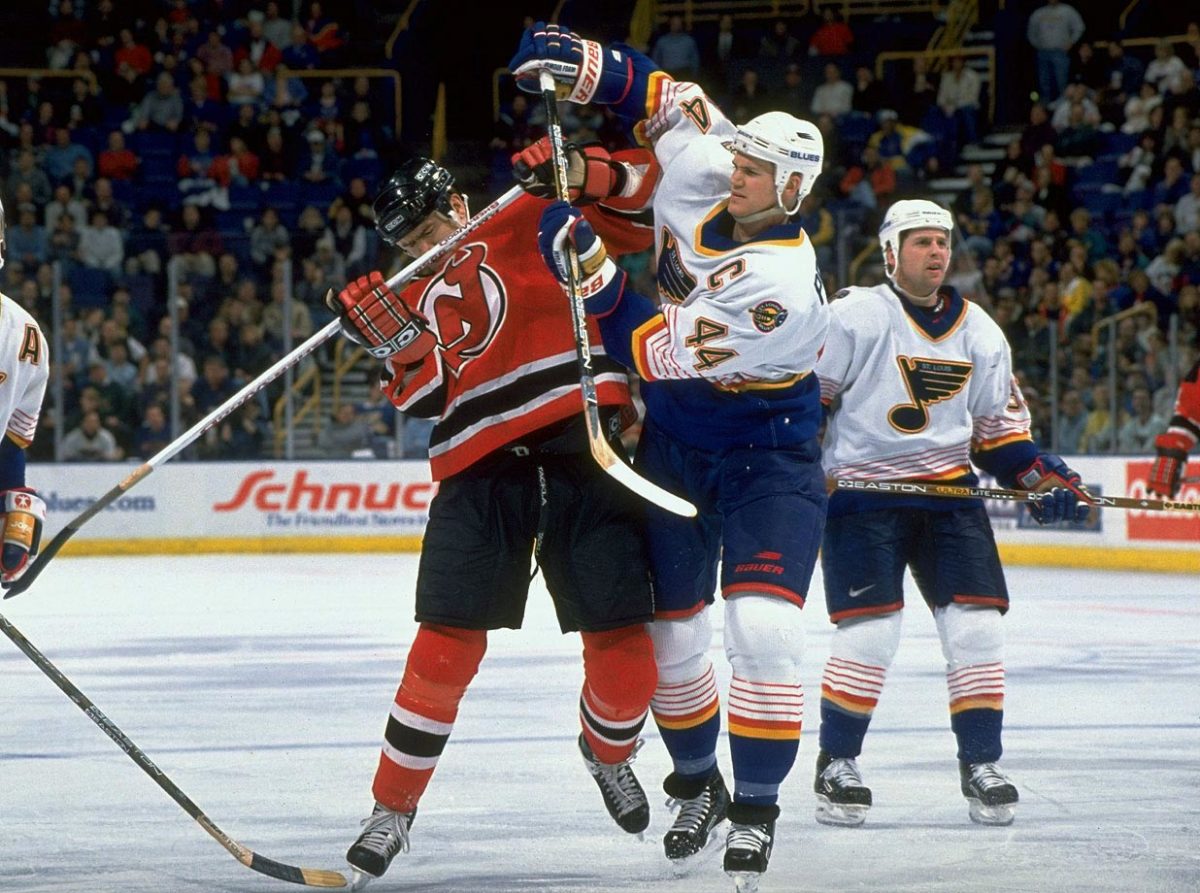
One of the meanest, most feared defensemen of his time, Pronger earned eight suspensions for excessive play, but he also had superb vision and anticipation that made him a deft outlet passer and defender who could afford to guess and take chances while playing aggressively. He reached the Cup finals with three different teams, winning the championship with Anaheim in 2007, and was inducted in the Hall of Fame in 2015.
10. Brian Leetch
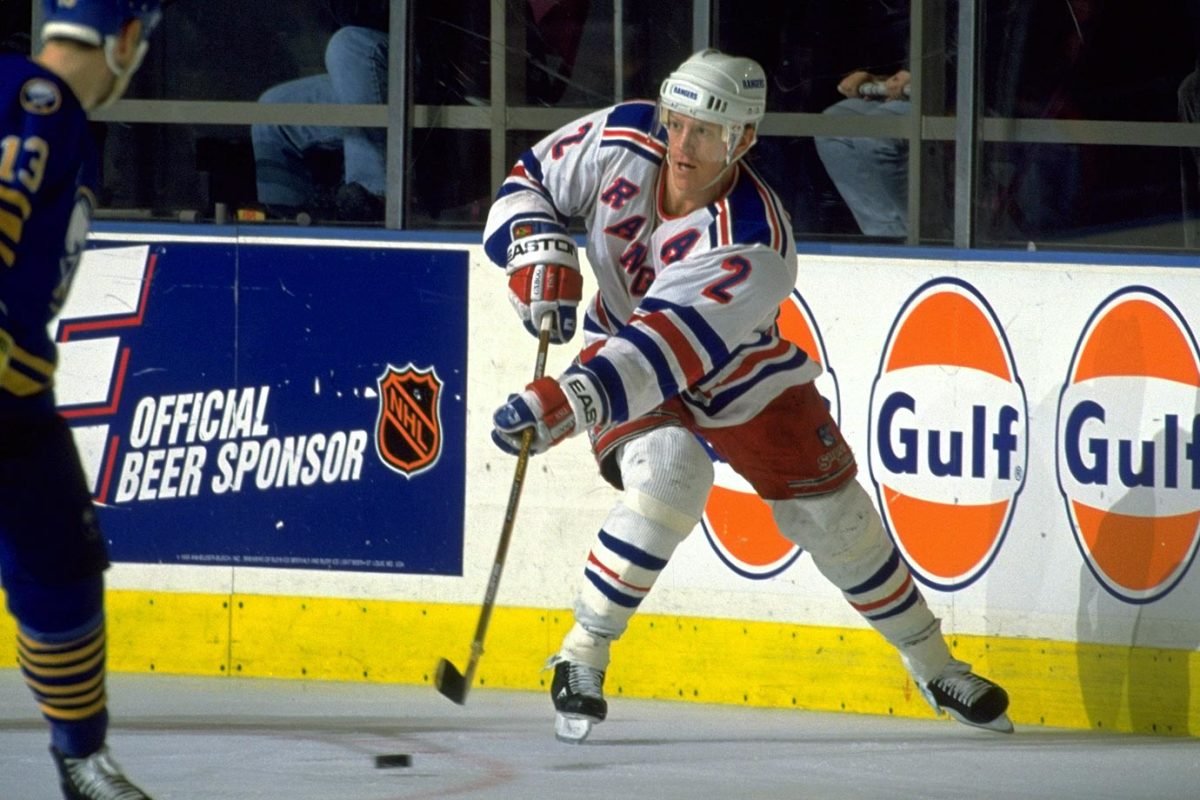
Perhaps the finest U.S.-born defenseman of all time, Leetch was a grab bag of skills. Though he lacked Paul Coffey’s speed and Al MacInnis’ shot, he had a knack for keeping pucks in at the point, making plays in traffic, riding bigger players off the puck in his own zone, and creating scoring chances out of broken plays. Leetch always saved his best play for pressure games, winning the Conn Smythe Trophy as playoff MVP in 1994 when the Rangers ended their 54-year Cup drought.
9. Pierre Pilote
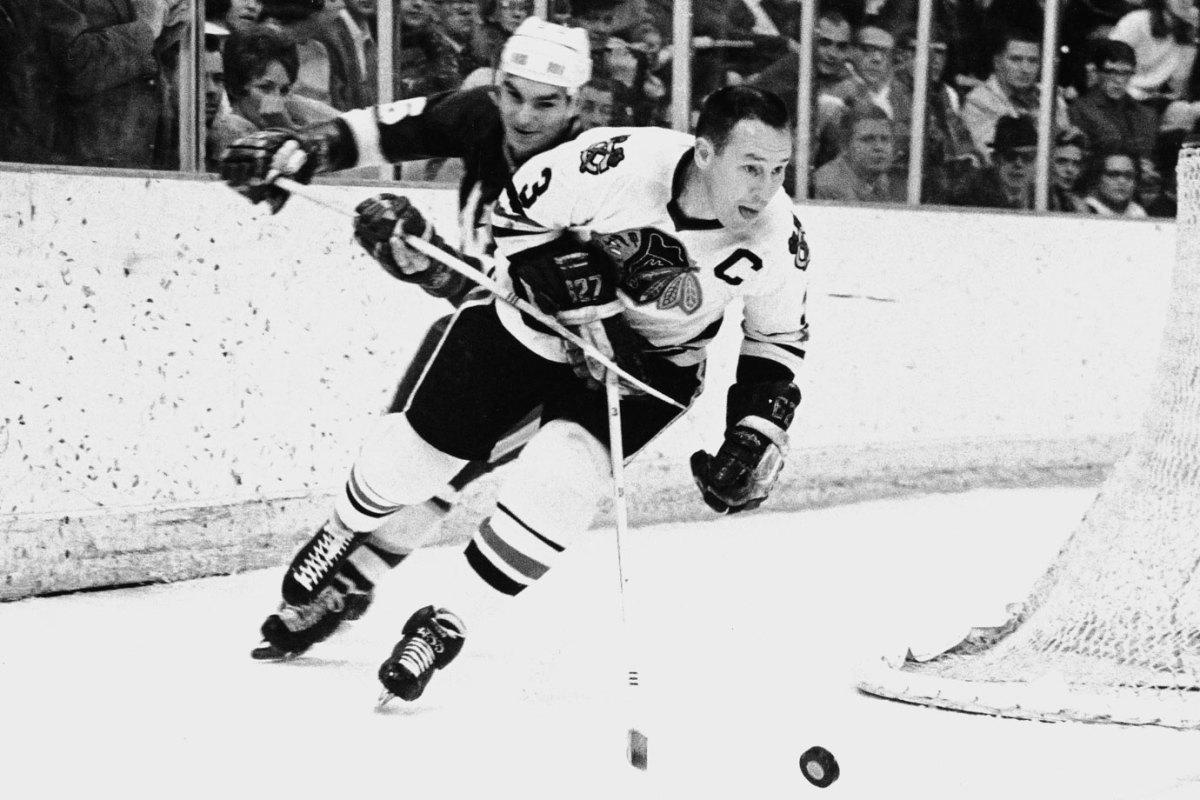
Pilote joined the Chicago in 1955, won the Stanley Cup in 1961 and became the Blackhawks’ captain the next season. Teamed with Moose Vasko for most of his career as one of the game’s top defensive tandems, he won three Norris Trophies and was runner-up three times. He had the offensive skills to be a fixture on the power play, scoring 14 goals in 1964-65 when Chicago again reached the Cup finals, and a nasty side with his stick, twice amassing 160 penalty minutes in a season.
8. Chris Chelios
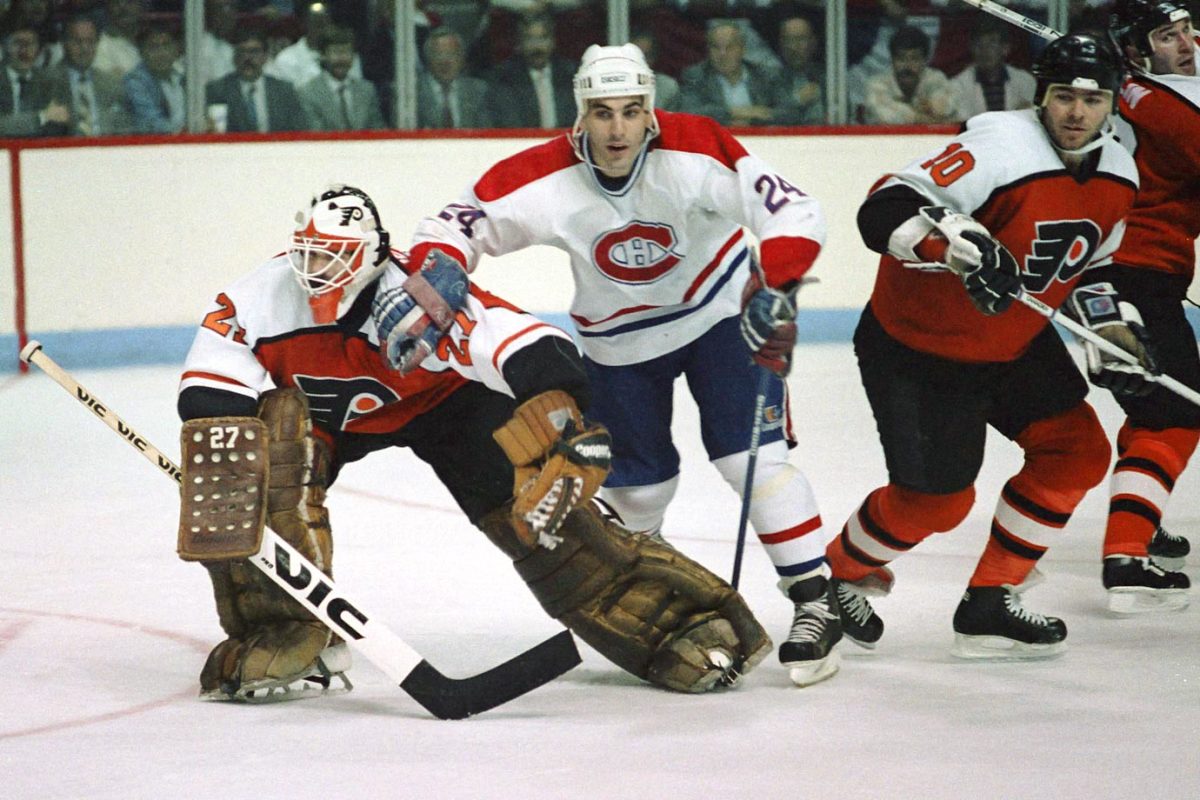
No one was more ill tempered or inspired more animosity in opponents. His 2,891 penalty minutes, second among NHL blueliners, were well earned. Flyers’ goalie Ron Hextall once compromised his team’s comeback in the closing minutes of a playoff game by chasing Chelios and pounding away. A three-time Norris Trophy winner, Cheli played to age 48 and his 1,651 games rank fifth all-time and first among defenseman.
7. Red Kelly
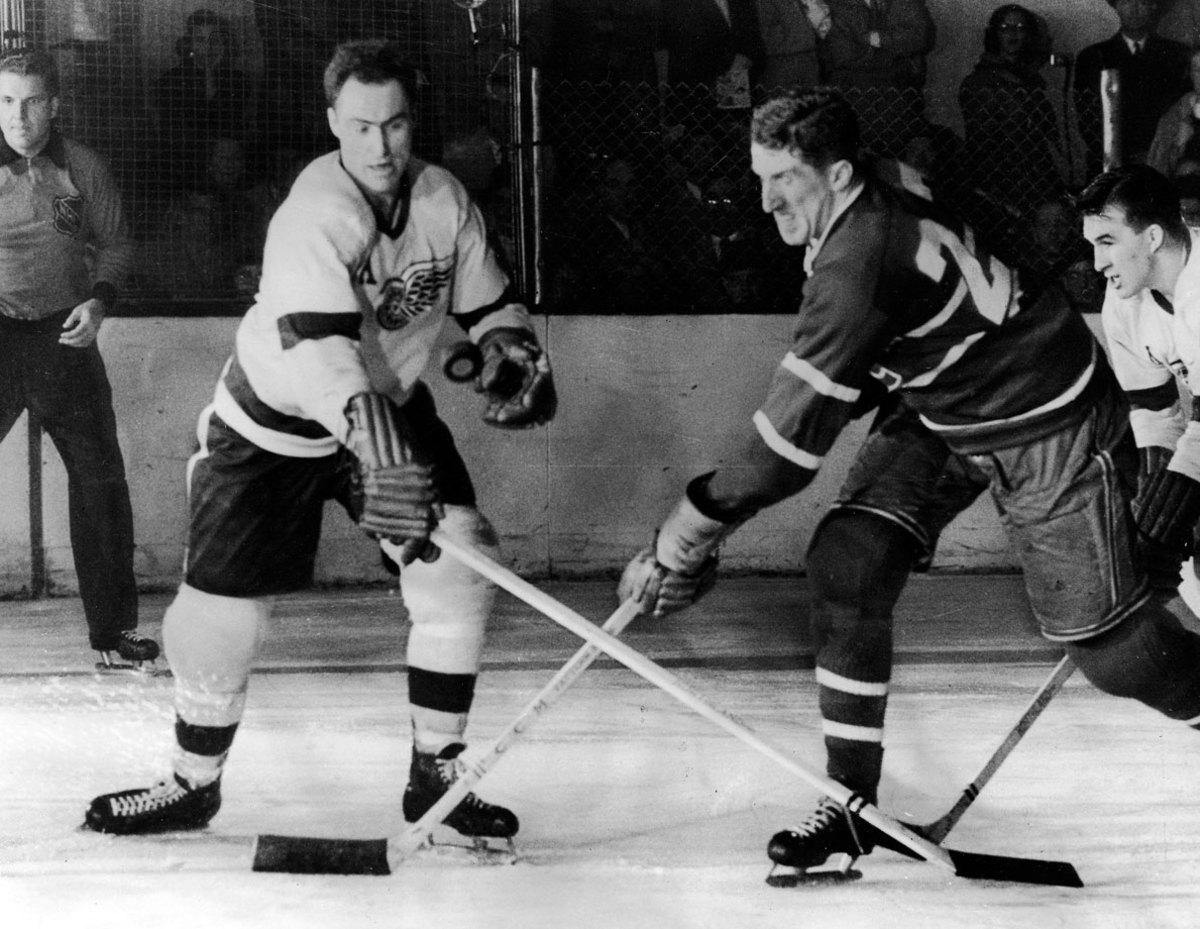
Kelly won eight Stanley Cups with Detroit and Toronto, more than any player who never played for Montreal, and the Norris Trophy in 1954, the year it was first awarded. When foot and leg injuries caught up to him, he actually moved up to play forward so he did not have to skate backwards as often, and he spent the last seven seasons of his 20-year career up front. When he retired, his 1,316 games played stood second only to Gordie Howe and ranked first among defensemen.
6. Larry Robinson
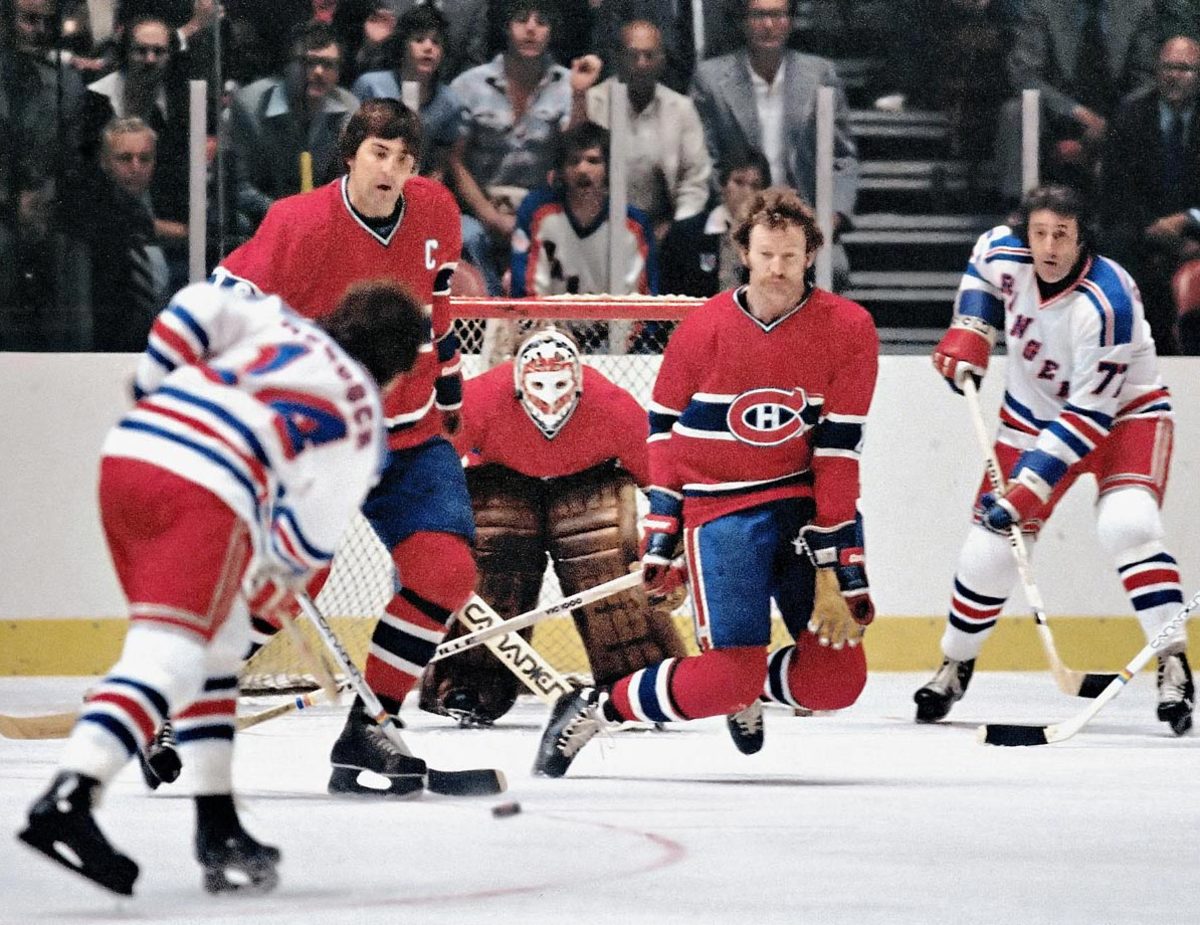
The 6’-4” Robinson was the ace of a Montreal defense corps that anchored four straight Stanley Cup teams (1976-79). He combined the offensive skills of backline partner Guy Lapointe and the defensive stinginess of Serge Savard, and his long reach made him tough to elude. He finished his career with the highest plus-minus rating (+730) in NHL history and later won his seventh Cup as coach of the Devils in 2000.
5. Denis Potvin
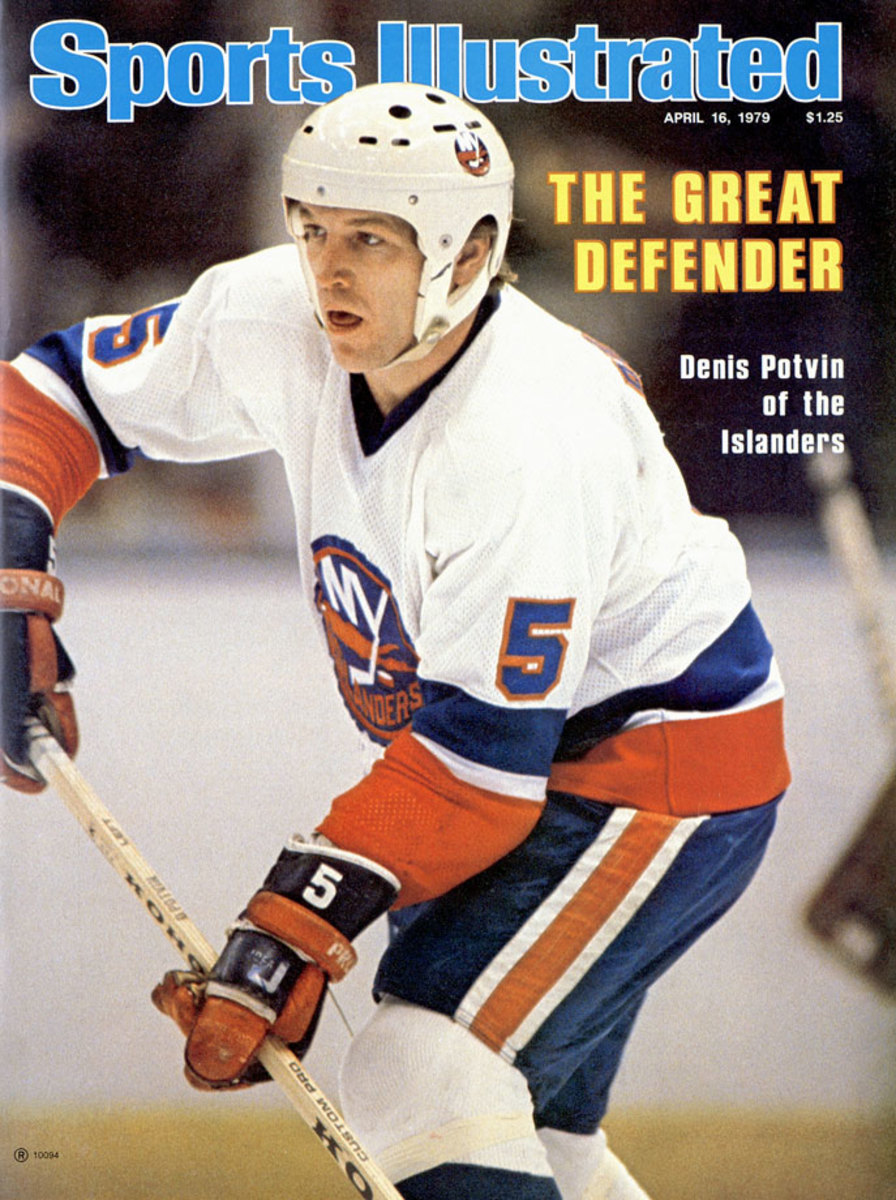
The 1974 Calder Trophy winner enjoyed his heyday as captain of the Islanders during their four consecutive Stanley Cups (1980-83). A three-time Norris winner, Potvin was an offensive force (310 goals; 1,052 points) and rugged bodychecker whose name still rings about the rafters of Madison Square Garden as fans of his crosstown rival Rangers invoke his memory with a vitriol reserved for few retired players in any building.
4. Nicklas Lidstrom
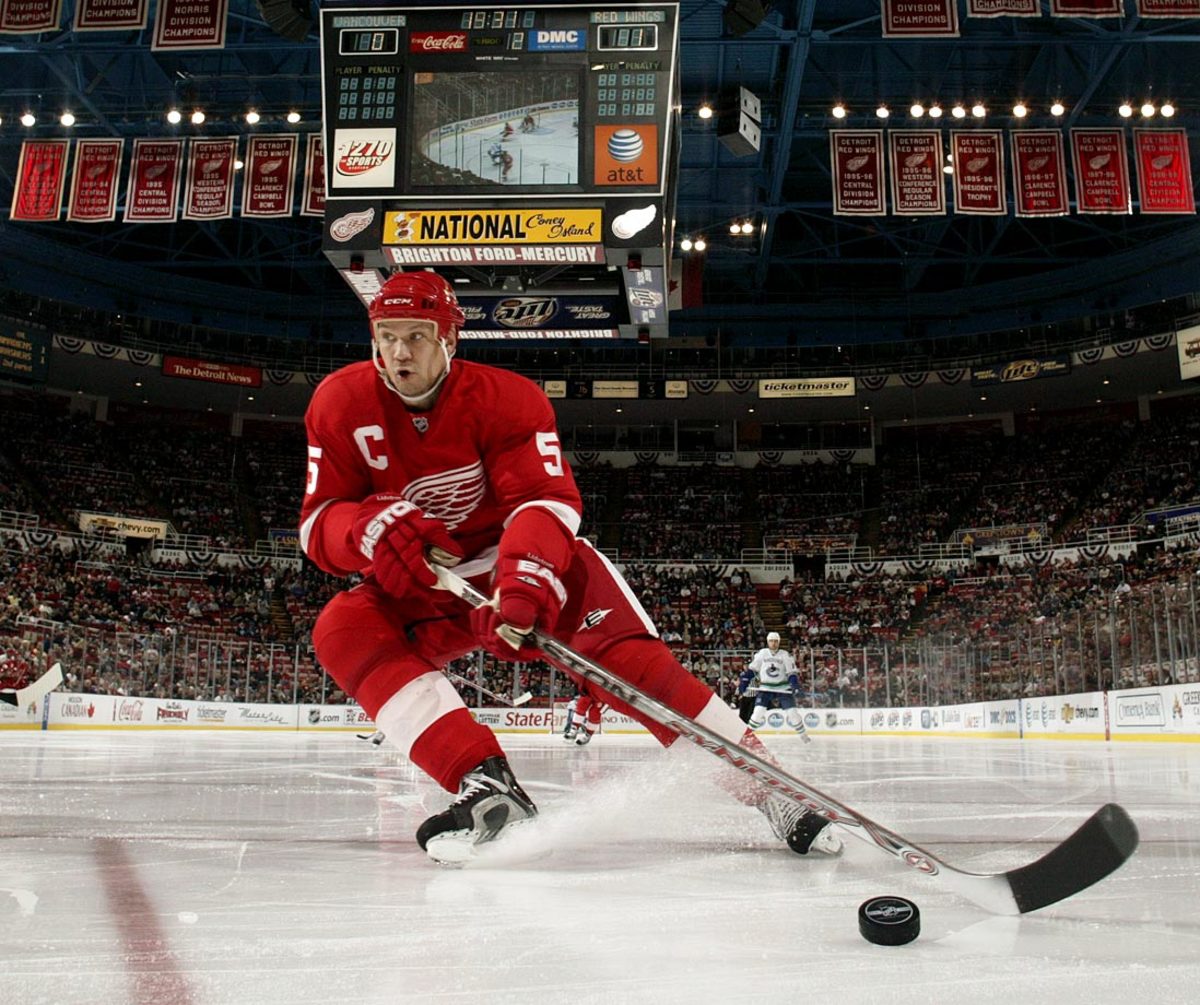
Lidstrom, a 2015 Hall of Famer, was called the perfect hockey player, a testament to his offensive wizardry, defensive subtlety, overall acumen and gentlemanly play. This four-time Stanley Cup winner with 1,142 career points and seven Norris Trophies was perhaps the least likely superstar to make a careless error or costly play. His Red Wings reached the playoffs each season of his 20-year career.
3. Doug Harvey
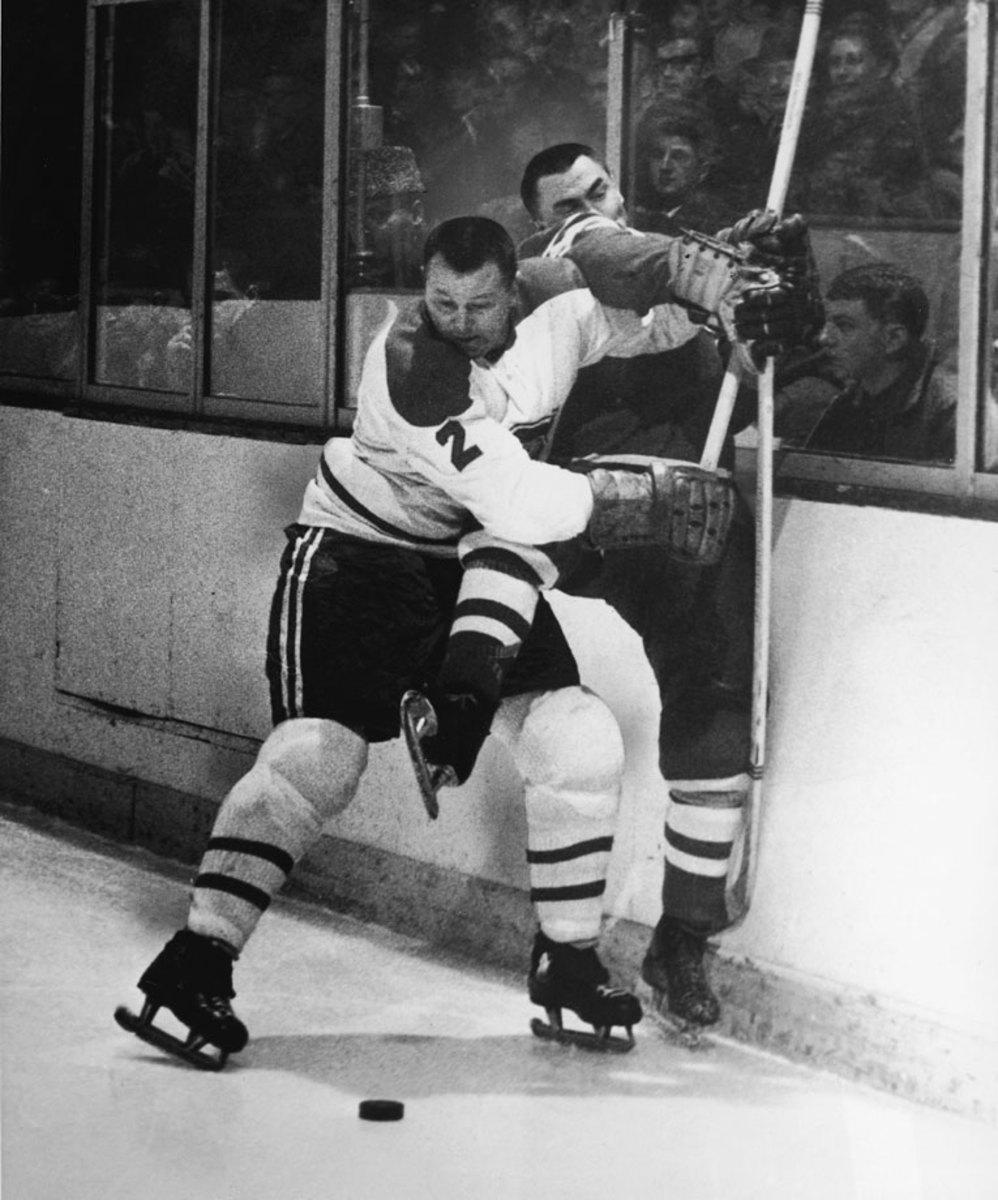
Described by the legendary Jean Believeau as the game’s greatest defenseman, Harvey was known for his superb skating and passing skills. He won the Norris Trophy seven times and was named to the NHL All-Star team 11 times. He was a key player for the Canadiens on six Stanley Cup championship teams, including their record five in a row (1956-60), before moving on to the Rangers when Montreal traded him in 1961 as punishment for helping to organize the players’ association.
2. Ray Bourque
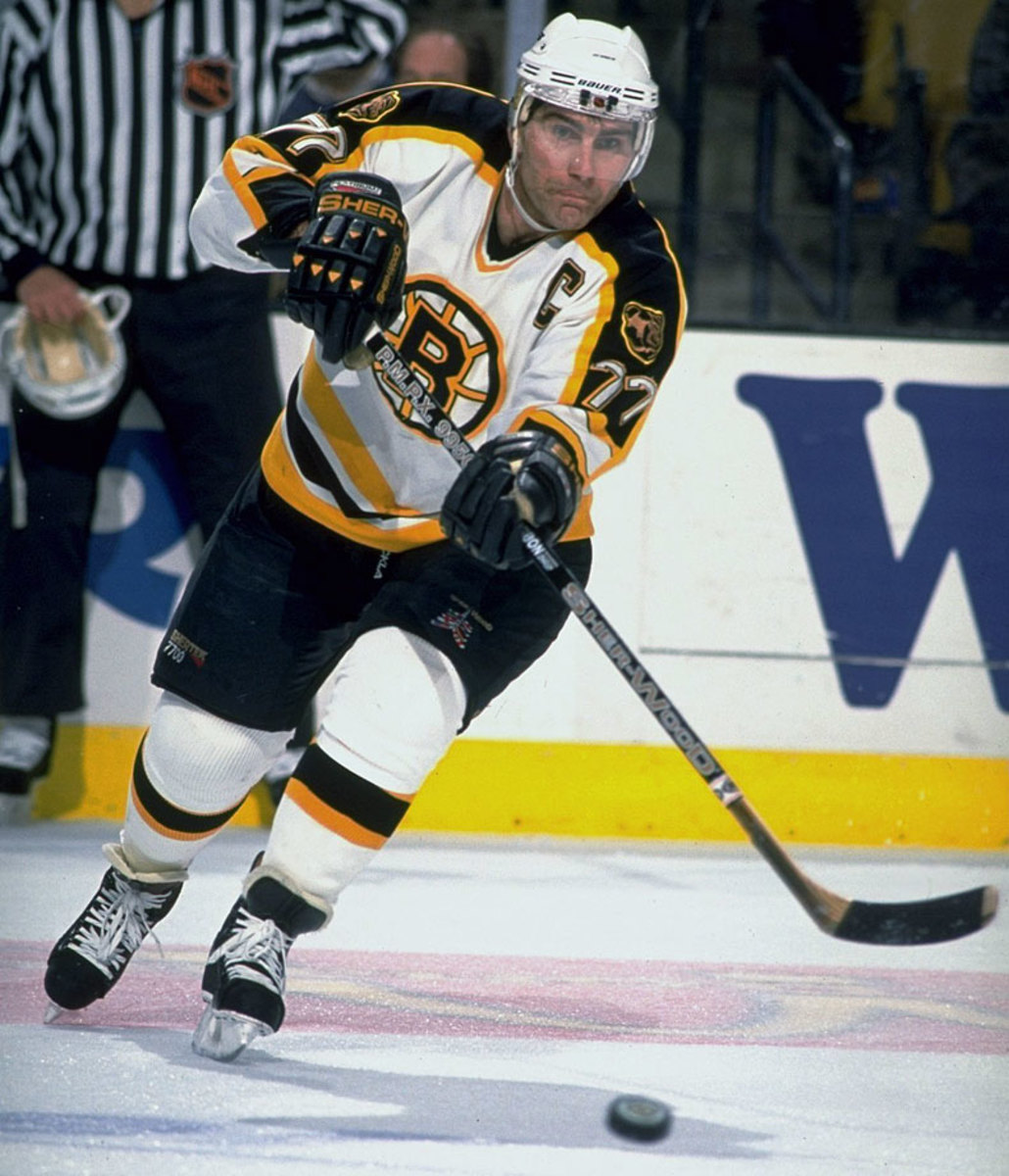
Few have played with the quiet leadership and integrity of Bourque, the all-time leader among defensemen in goals (410), assists (1,169) and points (1,579). After two trips to the Cup finals, 13 First-Team All-Star selections, and six Second-Team nods with Boston, he welcomed a trade to Colorado as a final chance to play for the title. Perhaps no player’s skate with the Stanley Cup met with as much joy as Bourque’s celebrating during his final game in 2001.
1. Bobby Orr
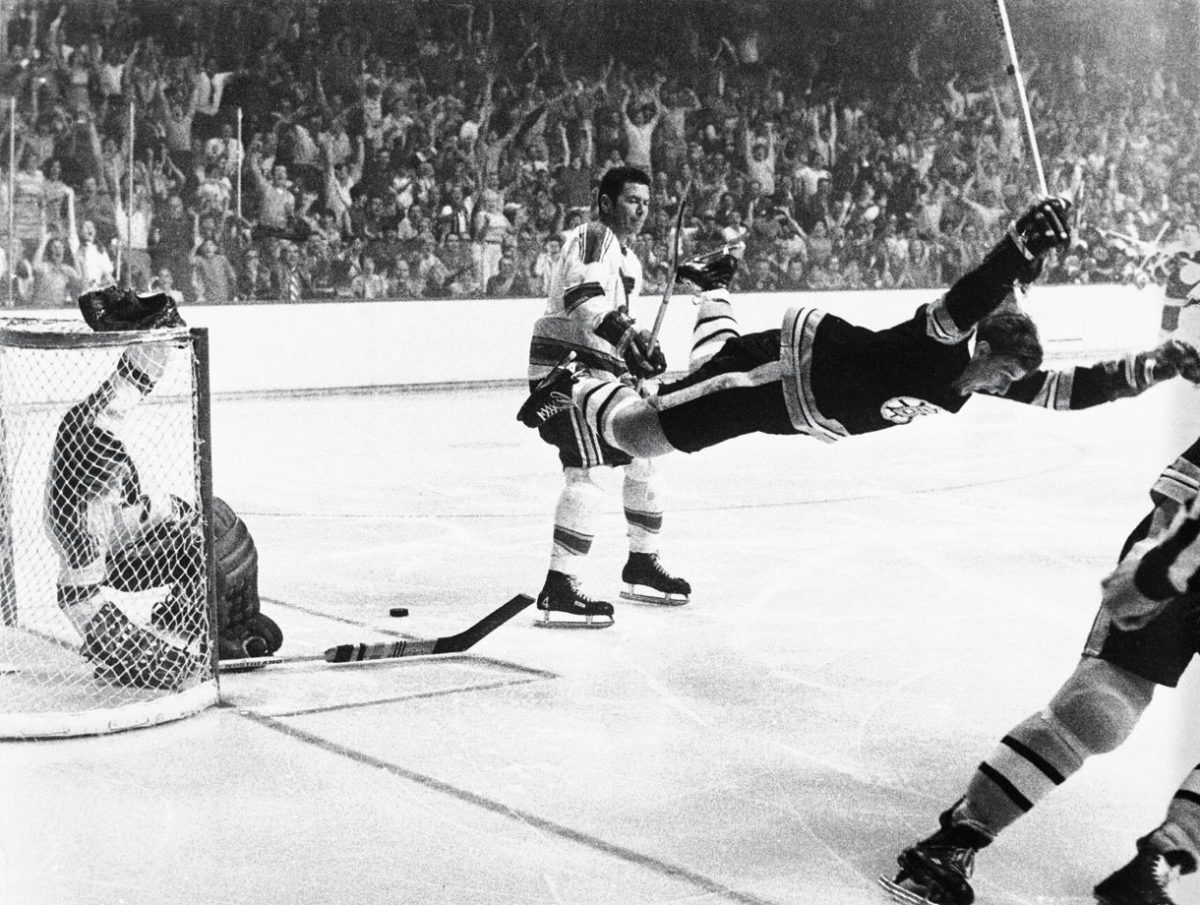
The legendary Bruin redefined what the position could do, joining rushes and sometimes creating them from his own end of the ice. Orr won eight straight Norris Trophies (1968- 75), three Harts and two scoring titles, an unheard of accomplishment for a defenseman. He led Boston, league also-rans before his arrival, to the Stanley Cup in 1970 and 1972, when he also won the Conn Smythe Trophy.
